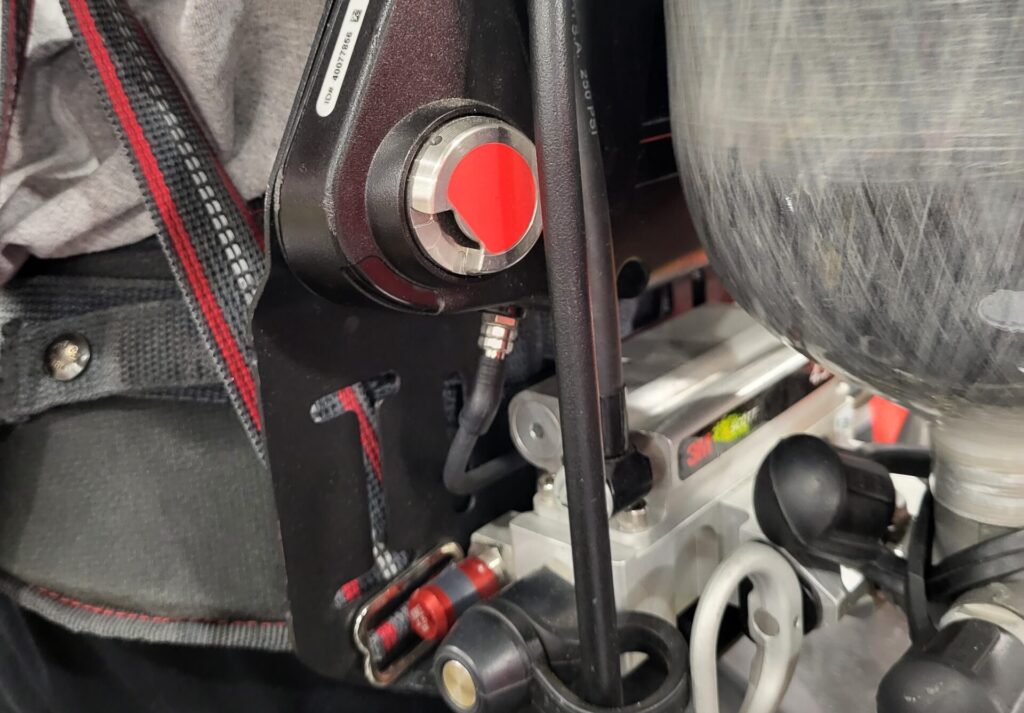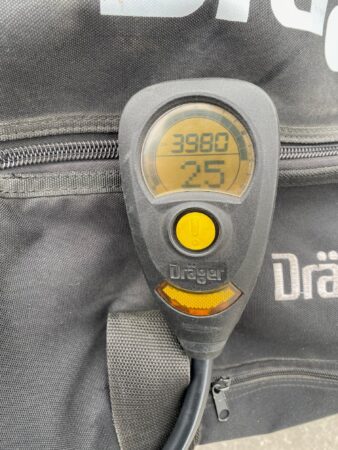
Back to Basics: Desensitizing firefighters – SCBA
By Mark van der Feyst
Features Training Week firefighter training firefighters First Responders training Photo credit: Mark van der Feyst
Photo credit: Mark van der Feyst The self-contained breathing apparatus (SCBA) is a firefighter’s best defense against all immediately dangerous to life and health (IDLH) environments. In our continued look at what aspects the firefighter has become de-sensitized to, we turn our attention to the SCBA. There are three key areas that we find commonly being ignored by firefighters or being developed as a bad habit: PASS alarms, not wearing the SCBA, and the low air alarm.
Not wearing it
With respect to our personal protective equipment (PPE), the greatest piece of protective equipment for the firefighter is the SCBA. It offers the highest respiratory protection to an individual that is completely mobile – it goes with the user as they go. As for the NIOSH rating associated with it, it is also the highest that can be achieved – it has a NIOSH rating of N-10,000. Compare that to the N-95 mask that is worn for medical purposes.
The key for the N-10,000 rating to be effective for the firefighter is for the SCBA to be worn and used. We have witnessed a great movement to promote the use of SCBA and promote the wearing of SCBA by trade unions, health and safety associations, and other advocacy groups in an effort to remind and encourage every firefighter to use and wear their SCBA.
In our current year, we are still seeing firefighters not wearing and using their SCBA at incidents that require the use of them. On a regular occasion, we can see examples of this on social media platforms with firefighters at vehicle fires and at structure fires performing their tasks without being on air or even wearing the SCBA.
The biggest system within the human body is the respiratory system and it is also the easiest system to be compromised. We cannot visibly see what contaminants are in the air that we are breathing in – and yet, we breathe in the ambient air around us at a regular rate of 12 to 20 breaths per minute. It only takes one breath to compromise our respiratory system – it only takes one breath to kill us.

Photo credit: Mark van der Feyst
With repeated exposure to toxic smoke, by-products of combustion and other contaminants that are in the air, we are killing our bodies slowly. The high rate of cancers that firefighter’s contract is due to exposure to these contaminants on a regular basis. What will protect us from the toxic environment that are exposed to? The SCBA – more specifically, wearing and using the SCBA.
PASS alarms
The Personal Alert Safety System (PASS) alarm was added to the SCBA as a way to call for help when the user needed it. In the beginning, it was a manual system that had to be turned on by the firefighter. Through a few Line of Duty Deaths (LODD), it was shown that the PASS alarm was turned off and never activated. The NFPA 1981 Standard then made it mandatory that the PASS alarm be a redundant safety feature on the SCBA – every time the cylinder was opened, the PASS alarm was turned on.
The way a PASS alarm works is as follows: when there is a period of time (roughly 30 seconds) when there is no movement/activity from the firefighter, the PASS alarm goes into pre-alert with a warning audible sound. This will be an ascending/descending sound to get the firefighter’s attention. This pre-alert will activate for about ten seconds – if the firefighter moves or resets the PASS alarm, it will stop. If the firefighter does not move or reset it, the pre-alert then leads to a full alarm.
There needs to be a reaction to every PASS alarm going off, and this starts in training.
The bad habit that the fire service is developing is complacency to the sound of the PASS alarm. This is where we have the firefighter becoming desensitized to PASS alarms – when they go off in full alarm, no one reacts to them. This is because we have numerous and continuous false activations of the PASS alarm. They are always going off due to firefighters not managing their SCBA by moving or by resetting the PASS when it is in pre-alert or by the famous method which is to take off the SCBA, put it on the ground and then walk away without deactivating the SCBA. As soon as they walk away, the PASS alarm goes off in full alarm with the firefighter having to run back to deal with it.
When this occurs, there is no reaction to it because firefighters hear it way too often – it is disregarded just like the car alarm. The opposite needs to be done; there needs to be a reaction to every PASS alarm going off, and this starts in training. Getting used to reacting to the PASS alarm will transition easily onto the fire ground when it happens. It also starts with every firefighter reacting to it along with the officers and chief officers setting the expectation of eliminating false activations.
Low air alarms
The SCBA has a low air alarm that is designed to activate at 33 per cent of the total air left in the cylinder. It was previously at 25 per cent of the total air left, and was increased to provide a larger cushion of safety for the event of a firefighter getting lost or trapped or injured and requiring rescue.
Too many firefighters are relying on the low air alarm to indicate to them that it is now time to exit the structure, when they should be monitoring their air consumption and keeping tabs on how much air is left in their cylinder. They should be leaving well before the low air alarm goes off so that should the unexpected occur to them, they will have 33 per cent air available to use to sustain them till rescue.
The desensitized firefighter gets used to the low air alarm indicating the time to leave and because of previous successful exits with less than 33 per cent air left, they get complacent to the fact. The way to overcome this complacency is with expectations set by the chief officer that all personnel with exit the structure before their low air alarm is activated.
Mark van der Feyst has been in the fire service since 1999 and is currently a Battalion Chief with SNFES and also a firefighter with the FGFD. Mark is an international instructor teaching in Canada, the United States, FDIC, Africa and India. He is the lead Author of Fire Engineering’s Residential Fire Rescue & Tactical Firefighter books. He can be contacted at Mark@FireStarTraining.com.
Print this page
Advertisement
- Trainer’s Corner: Fighting wildfires
- ‘Zombie fires’ are occurring more frequently in boreal forests, but their impacts remain uncertain